Inside the New Agency Playbook: How B2B Email Marketing Service Agencies Are Building ‘Micro-Funnels’ for Every ICP
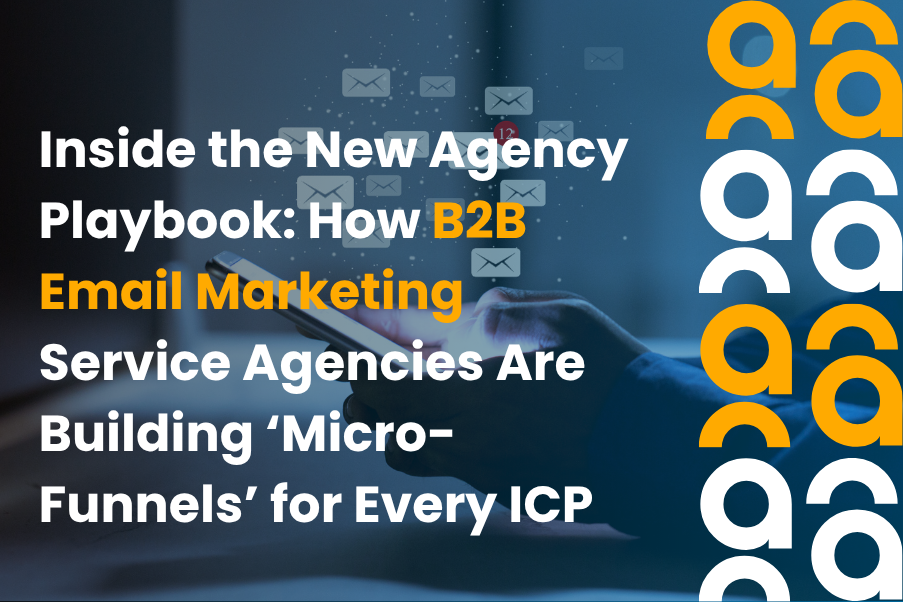
Introduction
B2B buying doesn’t follow the same old techniques of email marketing. Buyers move quickly between research, comparing vendors, and getting internal approvals within days or even hours.
That is why B2B email marketing service agencies are changing their strategies from lengthy, generic drip campaigns to more targeted and focused micro-funnels for each Ideal Customer Profile.
These micro-funnels not only send emails but also help build relationships. They reach out to clients based on who they are, what they care about, and where they are in their buying journey.
In this blog, let us explore what micro-funnels are, why B2B email marketing service agencies are adopting them, and how this approach is reshaping the future of B2B communication.
What is a Micro-Funnel?
A micro-funnel is a small, focused sequence of messages, actions, and automation created for one specific type of buyer. It works like a mini-campaign that supports the larger marketing strategy.
Instead of sending ten general drip emails to everyone, a micro-funnel includes about three to five very relevant messages designed for one Ideal Customer Profile who shares the same challenges and buying timeline.
Now that you know what a micro-funnel is, let’s see how it looks in action.
For example:
- Founders receive emails about strategy and better ROI.
- Marketing managers get emails about the automation campaigns.
- Sales teams receive emails about lead quality.
How Agencies Design Micro-Funnels: The Three Building Blocks
1. Data layering makes the profile rich
Agencies begin with a strong b2b email list and then layer intent, firmographics, and past engagement on top. The richer the data, the better the funnel can map content to need.
This is where database management and syndication partnerships play an important role, as they help bring the right accounts and people into the funnel.
2. Automation rules
Micro-funnels follow simple automation rules.
For example, if a client opens two emails and clicks on a case study, they are redirected to a demo invite. If they don’t respond to both emails, they are redirected to a slower, low-engagement follow-up.
The main goal is to focus on speed and relevance instead of just sending more emails. It is easy to take on traditional drip email marketing, with a stronger focus on the right audience.
3. Human and AI collaboration
Content is created through a human-first process supported by AI. Writers concentrate on creating the main message, and AI supports them by offering ideas for subject lines, personalization elements, and the most suitable time to send.
Human editors then review everything and add empathy where needed. The outcome is a message that sounds more like a genuine conversation rather than a one-sided announcement.
Why Micro-Funnels Convert Faster
Micro-funnels make the process smoother. They talk directly to one Ideal Customer Profile, use a single clear call to action, and respond quickly to buyer signals.
This speed is important in B2B marketing because the window of interest is often short. B2B email marketing service agencies using these funnels see higher reply rates and a shorter time to book meetings compared to broad, generic campaigns.
Agencies report up to 35% faster response rates with such targeted sequences.
The idea behind Account-Based Marketing becomes clearer when every email sequence is connected to account goals and follow-up efforts. Account-Based Marketing works best when each email matches the right needs and next steps.
How Micro-Funnels Fit into Broader B2B Systems
Good micro-funnels do not work on their own. They connect with ABM, content syndication, and CRM workflows.
When a funnel begins with a syndication lead or an ABM trigger, it becomes part of a well-planned marketing effort that brings together display ads, LinkedIn engagement, and B2B email campaigns that deliver the same message.
This connected approach keeps the communication consistent and prevents buyers from feeling confused.
Drip Campaigns or Micro-Funnels? Here’s What Sets Them Apart
Let’s compare both side by side to see where micro-funnels truly make a difference.
Feature | Drip Email Marketing | Micro-Funnel Approach |
Sequence Length | 6-12 emails, often stretched over weeks | 3-5 highly focused touches |
Target Audience | Broad, covers multiple personas | Specific ICP with shared pain points |
Content Style | Generic and informational | Personalized, outcome-driven |
Speed of Conversion | Slower | Faster |
Automation Level | Basic time-based triggers | Advanced behavior-based triggers |
Human Involvement | Automated Copy | Human-AI collaboration for context and tone |
Micro-funnels are not meant to replace all the drip programs. They work alongside them by giving high-value accounts and well-defined Ideal Customer Profiles a faster and more personalized journey.
Why B2B Email Marketing Service Agencies Are Adopting Micro-Funnels
B2B email agencies are adopting micro-funnels because they solve real problems and deliver measurable results.
For example, one agency running campaigns for SaaS clients noticed a 40% lift in demo bookings once they switched from broad drips to micro-funnels.
Here’s why this approach is gaining traction:
- High Engagement Rate: When emails directly focus on what a person is looking for, they are more likely to open them, read the content, and take the time to respond.
- Stronger Relationships: Personalized communication builds trust faster than generic campaigns.
- Improved Conversions: Tailored messages address exact pain points, making it easier for leads to take action.
- Smarter data insights: Micro-funnels provide detailed metrics about what each ICP responds to.
How B2B Email Marketing Service Agencies Build Micro-Funnels for Each ICP
Building a micro-funnel involves careful planning and the right tools. So how do agencies actually put these micro-funnels together? Here’s how email marketing service agencies create them:
- Identify the ICPs: Agencies start by defining their clients’ key audience types, such as SaaS startups, enterprise IT teams, or marketing agencies.
- Understand their pain points: Each ICP deals with different challenges. Agencies research what motivates them, what problems they face, and how the product and service solves those issues.
- Create tailored content: Based on this data, unique email sequences are written for each ICP.
- Awareness stage: informative blogs or insights
- Interest stage: demo invitations or feature breakdowns
- Decision stage: testimonials or case studies
- Set automation triggers: Using email tools, agencies automate follow-ups based on user actions like clicking links or downloading content.
This process ensures that every ICP experiences a personalized journey that feels meaningful and delivers results.
Real Benefits of Micro-Funnels
Agencies using micro-funnels report major improvements in both campaign quality and performance. Here are some of the biggest wins seen by B2B email marketing service agencies:
- Higher-quality leads: Targeting specific ICPs eliminates irrelevant traffic.
- Faster sales cycles: Leads move through the funnel more quickly.
- More personalized journeys: Each email feels relevant and valuable.
- Improved client satisfaction: Businesses see better ROI from their email campaigns.
This approach helps agencies grow while also building stronger client relationships through real, data-backed results.
Final Thoughts
The world of B2B marketing has changed. Sending the same message to everyone no longer works.
B2B email marketing service agencies that adopt micro-funnels are leading this transformation. By creating small, targeted email journeys for each ICP, they are delivering campaigns that feel human, relevant, and valuable.
Micro-funnels help agencies achieve personalization at scale, which is what separates successful marketers from the rest.
In today’s agency playbook, micro-funnels are not just a trend but the foundation of how the best B2B email marketing service agencies drive real results.
If you are ready to see how data-driven micro-funnels can improve your email strategy and deliver measurable results, explore Almoh Media’s B2B email marketing services and discover how your business can turn every lead into a lasting connection.
Introduction
If you’re using content syndication, chances are you see it as just another way to get your content in front of more eyes. That’s fine, but there’s a lot more hidden beneath the surface. When you allow its full potential, content syndication ROI can surprise you, and it doesn’t take much to shift perception.
Let’s look at fresh data, outline a winning content syndication strategy, and show how U.S. B2B teams can get real value from it. Let’s begin!
What Is Content Syndication?
At its simplest, content syndication means sharing your B2B content: whitepapers, case studies, blogs on someone else’s site or network. This can be paid or free. You expand your reach, tap into new networks, and generate visibility, often reaching audiences you’d otherwise miss.
Why ROI From Content Syndication Deserves a Second Look
1. Huge lead production for relatively low spend
According to recent studies, the average cost per lead with content syndication is around $43. That’s far lower than other tactics, so even moderate conversion rates can offer solid returns.
2. Fast pipeline growth
Some platforms report that customers see 300–500% return on investment within three years. That’s not fluff – it’s real pipeline growth.
3. Verified conversion tracking methods
With UTM tagging and targeted vendor reports, U.S. marketers can track everything from initial syndication click to closed deal.
4. Built-in trust and positioning
Syndicating through known sites can give you indirect credibility, boosting brand awareness and authority without extra effort.
B2B Content Syndication Strategy: How to Do It Right
A good content syndication strategy starts long before content hits a third-party platform:
a). Pick assets that matter
Whitepapers, case studies, and long-form guides work best. They not only attract interest but also help establish your brand as industry-relevant.
b). Target lead quality, not rush volume
Instead of chasing clicks, target professionals. For example, top B2B firms average a 5.31% conversion rate on syndication offers.
c). Tag everything with UTM links
Measure traffic, engagement, bounce rates, and conversions back at your URL. This helps with syndication attribution.
d). Track core metrics
- CPL (cost per lead)
- MQL-to-SQL conversion rates
- Revenue per lead (use your average contract value)
e). Use the ROI formula
ROI= Revenue−Spend
Spend
For example, $1,000 spent → 50 high-quality leads → $5,000 average value = ($250k – $1k)/$1k = 249× ROI.
f). Optimize, rinse, repeat
Check what works by audience, site, and format. Then double down and drop what doesn’t.
Concrete U.S. ROI Stats You Can’t Ignore
| Metric | Statistics/Insight |
| Cost per lead | $43 average CPL |
| Syndication conversion rate | ~5.31% typical |
| Lead-to-deal conversion lift | 45% increase when focus is on quality |
| ROI over 3 years | 300%–500% reported |
| Projected industry growth | From $4.7 B in 2022 to $5.9 B by 2030 |
Content Syndication for Lead Gen: A Step‑by‑Step Plan
1. Define your ideal audience
Use buyer personas: titles, sectors, company size – so your content finds the right hands. This way, a sharper audience focus helps eliminate wasted spend and improves downstream lead quality.
2. Pick content with substance
Original research, how-to guides, competitive whitepapers – these both educate and convert. Plus, assets that solve specific problems tend to drive stronger engagement and more intent-driven leads.
3. Choose partners wisely
Use third-party platforms to reach U.S. B2B audiences. Look for those offering clear lead reporting and media kits. Before moving forward, ask for case studies or past performance metrics to make a more informed decision.
4. Structure campaigns with UTM tags
Make distinct tracking links for each partner and asset. This makes sure it’s easier to attribute leads, identify top performers, and compare ROI across channels.
5. Launch and monitor
Track CPL, CPL-to-SQL, cost per opportunity, pipeline driven, and revenue tied. At the same time, monitor activity in real-time to catch early trends and shift strategy fast if needed.
6. Review and refine monthly
Use metrics to shift spend toward top performers and tweak underperformers. As a result, consistent optimization keeps your syndication efforts aligned with revenue goals, not just vanity metrics.
How to Calculate Content Syndication ROI
- Calculate total spend (vendor fees + internal costs).
- Count total leads.
- Multiply leads by average deal size for potential revenue.
- Apply the ROI formula:
Revenue−Spend
Spend - Compare ROI over time to benchmark your initiatives.
This method is backed by multiple calculators and case studies.
Hidden Content Syndication Benefits
- SEO gains: Backlinks from quality sources can raise domain authority.
- Brand authority: Recognition on respected sites = credibility.
- Extended content life: A blog post can live on for months if syndicated well.
- Nurture acceleration: Leads from syndication are often further along in buying cycles.
Mistakes to Avoid and Fix Fast
Mistake: Only tracking clicks, not deals.
Fix: Tie every lead back to conversions with CRM integration. That way, you get a clearer picture of what’s actually driving revenue, not just traffic.
Mistake: Focusing only on cheap volume.
Fix: Go after quality; MQL-to-SQL rates matter most. Otherwise, your sales team will waste time on leads that won’t convert.
Mistake: Publishing irrelevant content.
Fix: Audit content – ensure tone, relevancy, and depth match syndication partner audiences. In doing so, you increase the chances of your content resonating with the right decision-makers.
Mistake: Not optimizing over time.
Fix: Regular performance review. Cut poor performers, boost winners. Over time, this helps improve ROI and keeps your content syndication strategy focused and results-driven.
Why Lead Quality Beats Volume
Not all leads are created equal. A smaller batch of high-intent leads can drive more revenue than a huge pool of low-interest ones.
Many B2B brands in the USA are shifting toward account- based syndication, where campaigns are matched to specific industries or companies. This helps improve conversion rates, shorten sales cycles, and increase customer lifetime value.
In short, prioritizing lead quality helps improve the long-term content syndication ROI, especially when targeting high-ticket accounts.
How AI Is Shaping the Future of Syndication
AI tools are starting to reshape content syndication strategy by analyzing behavior patterns and automating placements across high-performing channels.
With predictive scoring, marketers can now:
- Match content formats to individual user segments
- Forecast lead readiness using engagement scores
- Automate syndication at scale using content intent data
These innovations are raising the ceiling on what’s possible for B2B content syndication, especially for companies focused on measurable results.
About Almoh Media
Use metrics to shift spend toward top performers and tweak underperformers.
As a result, consistent optimization keeps your syndication efforts aligned with revenue goals, not just vanity metrics.
At Almoh Media, we specialize in high-impact content syndication for lead gen. We help B2B companies in the U.S. grow their pipelines by delivering:
- Verified lead generation from trusted channels
- Industry-specific targeting and campaign setup
- Transparent reporting tied to your sales funnel
- A proven strategy backed by real ROI
We understand the U.S. B2B buyer journey, and our syndication campaigns are built to generate demand, not just clicks.
Final Takeaway
Content syndication is an easy win if done smartly.
Focus on:
- Quality, not just volume
- Clear tracking and attribution
- Lead-to-deal conversions
- Continuous optimization
With $43 CPL, 5+ percent conversion, and long-term returns of 300–500%, most U.S. B2B teams can justify putting more budget behind it.
Ready to Get Real ROI from Content Syndication?
Let Almoh Media help you build a smarter lead-gen machine. We bring strategy, scale, and precision to content syndication – so your campaigns don’t just get seen; they convert. Reach out now to get started.
-
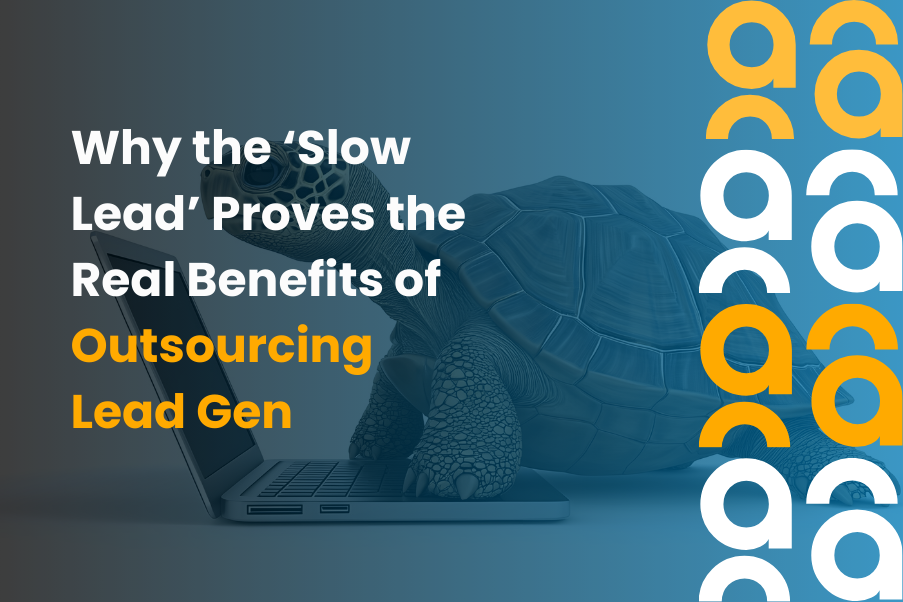 Why the ‘Slow Lead’ Proves the Real Benefits of Outsourcing Lead Gen
Why the ‘Slow Lead’ Proves the Real Benefits of Outsourcing Lead Gen -
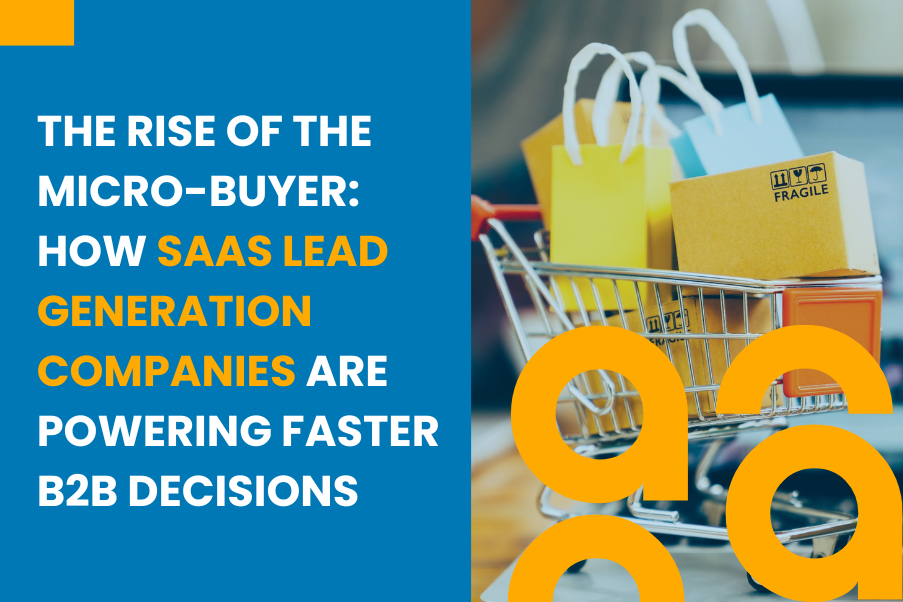 The Rise of the Micro-Buyer: How SaaS Lead Generation Companies Are Powering Faster B2B Decision
The Rise of the Micro-Buyer: How SaaS Lead Generation Companies Are Powering Faster B2B Decision -
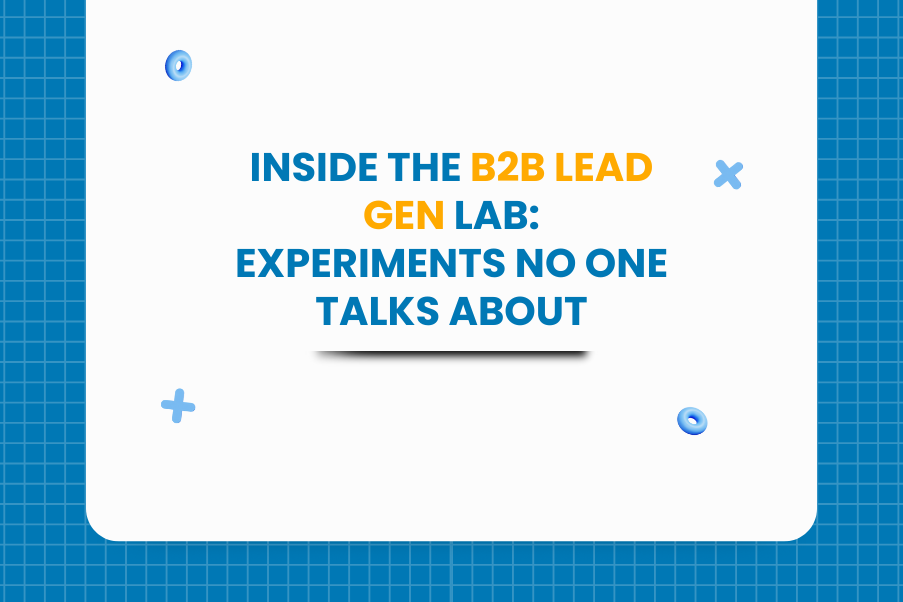 Inside the B2B Lead Gen Lab: Experiments No One Talks About
Inside the B2B Lead Gen Lab: Experiments No One Talks About -
 5 Criteria That Separate Great B2B Content Syndication Service Providers from the Pretenders
5 Criteria That Separate Great B2B Content Syndication Service Providers from the Pretenders -
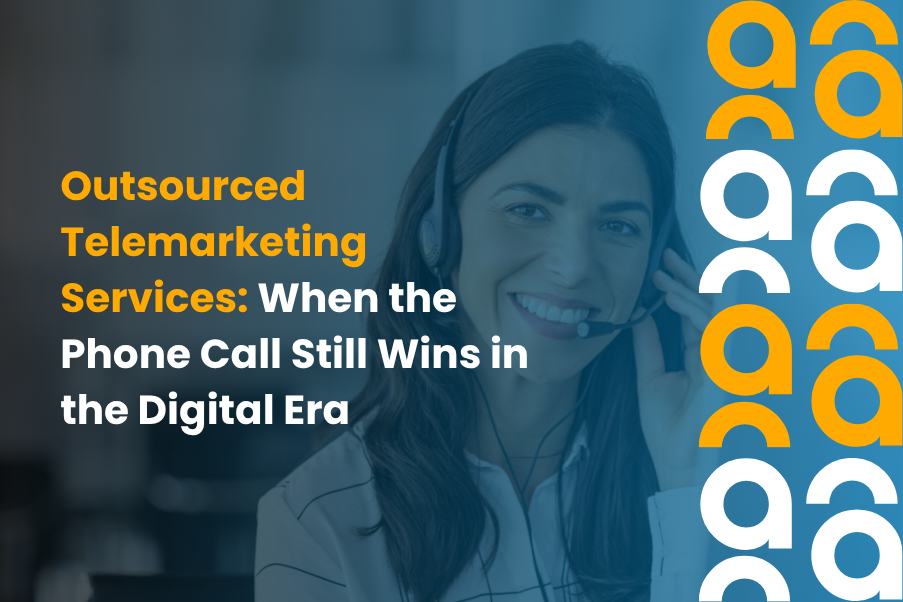 Outsourced Telemarketing Services: When the Phone Call Still Wins in the Digital Era
Outsourced Telemarketing Services: When the Phone Call Still Wins in the Digital Era

